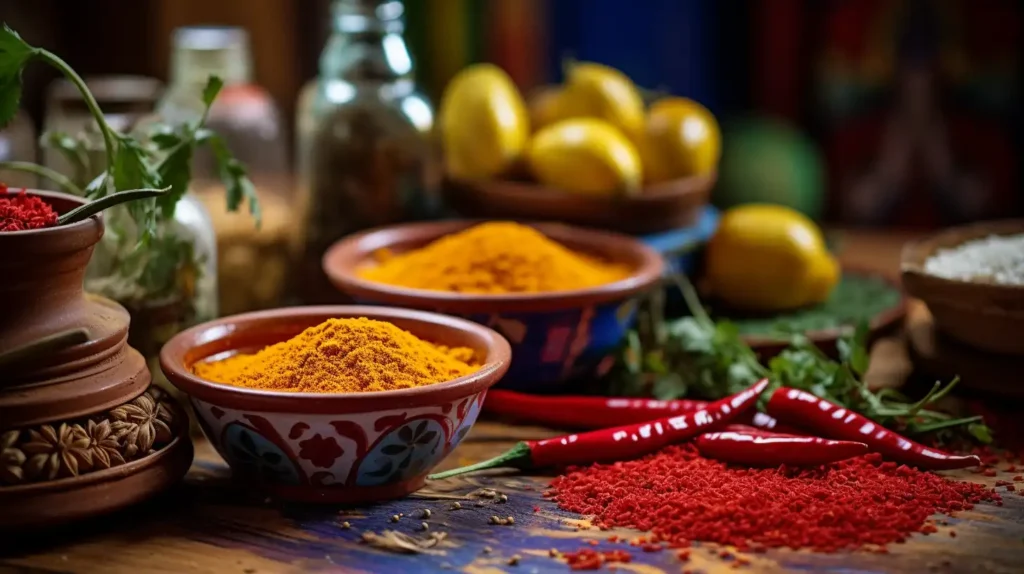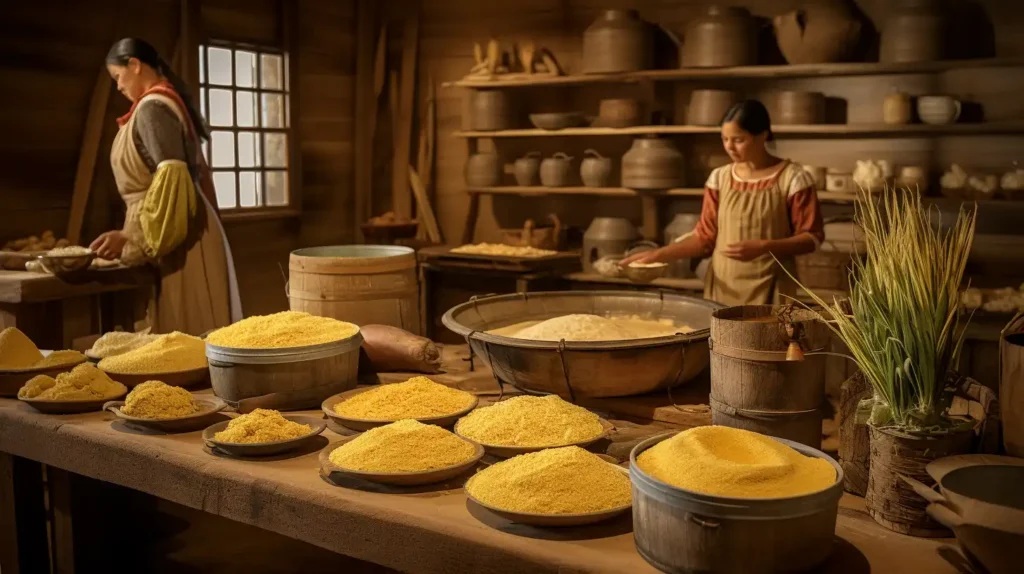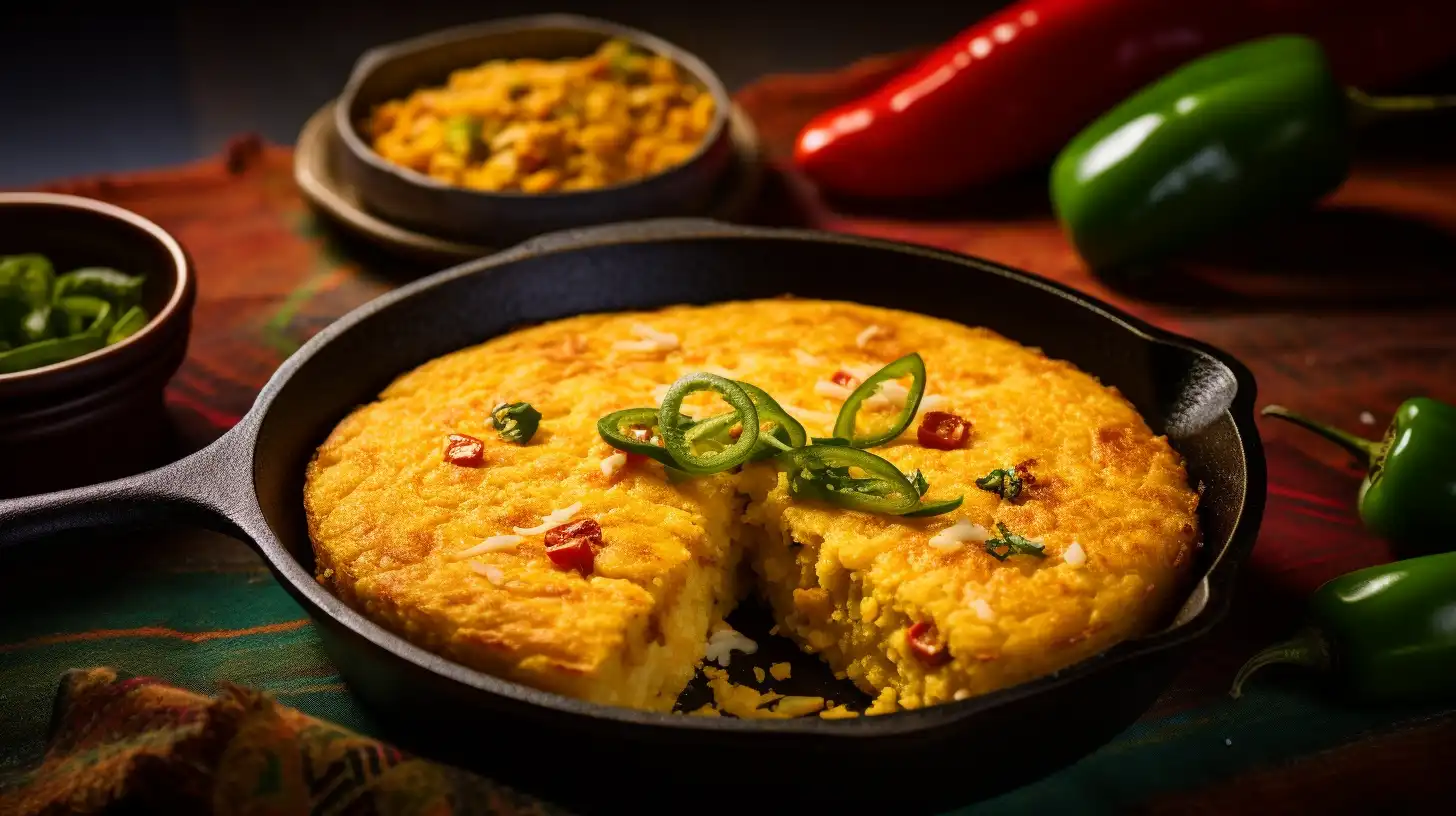Why is it Called Mexican Cornbread?
Cornbread, a timeless classic, is cherished by many cultures, but when we talk about Mexican cornbread, the name sparks curiosity. The term reflects more than just a geographic origin; it speaks to the unique blend of flavors and traditions that give this dish its identity.
The name “Mexican cornbread” likely stems from the distinct use of ingredients that are deeply rooted in Mexican culinary traditions. Jalapeños, cumin, and creamed corn, for instance, transform a simple bread into a robust, spicy masterpiece. These additions, paired with classic cornbread elements like cornmeal and cheese, create a harmony of flavors that represents the culinary influence of Mexico.
Beyond the ingredients, the preparation often nods to Mexican cooking techniques, such as baking in cast-iron skillets for that crispy, golden crust. This combination of elements not only distinguishes Mexican cornbread but also celebrates the cultural exchange that brought it to life.
Introduction to Cornbread

Cornbread’s roots run deep in North America, with its history stretching back to the indigenous peoples who first cultivated corn. Over the centuries, this humble dish has evolved, carrying with it the stories of survival, adaptation, and innovation. Today, cornbread is a cherished staple in many cuisines, and Mexican cornbread is one of its most flavorful interpretations.
Origins of Cornbread in Native American Cuisine
Before European settlers arrived in the Americas, indigenous communities were already masters of maize. Corn was their lifeblood, used not only as a food source but also in cultural rituals and traditions. By grinding dried corn into meal and mixing it with water, they created the earliest versions of cornbread, often cooked over an open flame.
This method of preparation was practical and versatile, making cornbread a reliable food for sustaining life. The simplicity of ingredients—cornmeal, water, and a little salt—meant that it could be made virtually anywhere. Though rudimentary, these early iterations laid the foundation for the diverse variations of cornbread we enjoy today.
Evolution of Cornbread in American Culinary Traditions
When settlers arrived, they embraced corn as a staple crop, learning from indigenous peoples how to grind and cook it. Over time, new ingredients like milk, eggs, and sugar were incorporated, transforming cornbread into a baked good. This evolution continued as regional influences emerged, from the sweeter Northern-style cornbread to the savory, crumbly Southern version.
Mexican cornbread, however, stands out. It reflects a melding of American and Mexican flavors, making it both familiar and exotic. This evolution of cornbread into a cultural hybrid highlights how food can act as a bridge, connecting diverse culinary heritages.
For a deeper dive into the history of cornbread, check out this fascinating resource, which offers a thorough look at its transformation over centuries.
Influence of Mexican Cuisine

Mexican cuisine has a rich history, deeply intertwined with its native ingredients and culinary traditions. When it comes to Mexican cornbread, the influence of Mexico’s food culture is unmistakable. From its use of vibrant spices to locally inspired preparation methods, this version of cornbread has become a flavorful tribute to Mexico’s culinary identity.
Introduction of Corn to Mexico and Its Culinary Significance
Corn, or maize, has been a cornerstone of Mexican cuisine for thousands of years. First domesticated in ancient Mesoamerica, it became the foundation of countless traditional dishes. From tortillas to tamales, corn represented sustenance, spirituality, and innovation.
This deep cultural connection to maize set the stage for integrating cornmeal into diverse recipes, including bread-like creations. Over time, this innovation gave rise to what we now call Mexican cornbread. The addition of iconic Mexican staples, such as chili peppers, elevated the flavor profile and tied the dish to its Mexican roots.
Integration of Mexican Ingredients into Traditional Cornbread
What makes Mexican-style cornbread stand out? The ingredients. Traditional cornbread gets a zesty makeover with elements like jalapeños, creamed corn, and cheddar cheese. These flavors, often associated with Southwestern cuisine, infuse cornbread with a boldness that sets it apart.
Additionally, spices like cumin and chili powder are frequently incorporated to enhance the dish’s savory notes. Even the choice of cheese, often a melty cheddar or a crumbly queso fresco, reflects the culinary influence of Mexico. The result is a perfect balance of hearty and spicy that leaves a lasting impression.
This fusion highlights how Mexican cuisine has influenced countless dishes, making them both familiar and delightfully unique. To explore other ways Mexican flavors transform traditional recipes, check out this insightful article.
Defining
Mexican cornbread isn’t just about taste—it’s about texture, aroma, and the story it tells. This flavorful dish merges the rustic simplicity of traditional cornbread with the bold, colorful ingredients of Mexican cuisine. To truly understand what makes it Mexican cornbread, let’s break it down.
Key Ingredients Distinguishing
The ingredients in Mexican cornbread are what set it apart. While classic cornbread relies on staples like cornmeal, milk, and eggs, Mexican cornbread ups the ante with:
- Jalapeños: Adding a spicy kick, jalapeños bring the heat that many associate with Mexican cuisine.
- Creamed Corn: This not only amplifies the corn flavor but also adds moisture, making the bread incredibly tender.
- Cheddar Cheese: A rich, melty element that enhances the bread’s savory profile.
- Spices: Cumin, chili powder, and sometimes even paprika give the bread a depth of flavor that’s undeniably Mexican.
These ingredients work in harmony, creating a dish that’s hearty, zesty, and utterly irresistible.
Traditional Preparation Methods
When it comes to making Mexican cornbread, tradition often takes center stage. The process usually involves baking the batter in a cast-iron skillet, which ensures an evenly cooked interior and a crispy, golden crust. The skillet, preheated with a touch of oil or butter, gives the bread its characteristic texture—soft and moist in the middle, with a slight crunch on the edges.
Another notable technique is layering. Some recipes call for adding jalapeños or cheese in between layers of batter, creating pockets of flavor throughout the bread.
These methods, passed down through generations, showcase the creativity and resourcefulness of home cooks who adapted cornbread recipes to fit their tastes and traditions.
Regional Variations
Cooks across regions have reimagined Mexican cornbread in countless ways, like any other beloved dish. Local tastes and traditions shape these variations, showcasing the versatility of Mexican-style cornbread in diverse culinary contexts. Let’s explore some popular versions that highlight the versatility of Mexican-style cornbread.
Southwestern U.S. Adaptations
In the Southwestern United States, Mexican cornbread has become a staple in Tex-Mex cuisine. Here, the dish often takes on a heartier form, with additional ingredients like:
- Ground beef or chorizo: Adding protein transforms cornbread into a complete meal.
- Black beans or pinto beans: These introduce an earthy, creamy texture that pairs beautifully with the cornbread’s crumbly base.
- Green chilies: Milder than jalapeños, green chilies provide a smoky undertone.
This version is often served alongside hearty dishes like chili or as a stand-alone comfort food. The Southwestern adaptation celebrates the fusion of American and Mexican culinary traditions, adding depth and versatility to the classic recipe.
Pan de Elote: The Mexican Sweet Cornbread
On the sweeter side of the spectrum, Mexico’s Pan de Elote is a beloved dessert-like variation of cornbread. Made with fresh corn kernels and condensed milk, it has a soft, almost cake-like texture.
Cooks typically bake Pan de Elote in a rectangular dish or small ramekins, slice it, and serve it warm with cream or powdered sugar.
Whether sweet or savory, these variations of Mexican cornbread showcase the creativity and adaptability of the dish, making it a favorite across borders. For a deeper look into Pan de Elote and its cultural significance, visit this detailed resource.
Cultural Significance
Mexican cornbread is more than a recipe—it’s a symbol of tradition, resilience, and community. Its cultural significance stretches across generations, playing a role in both festive gatherings and everyday meals. Let’s explore how this dish is woven into the fabric of Mexican-American life.
Role in Mexican-American Communities
In Mexican-American households, cornbread is often a cherished comfort food. Its warm, hearty flavors bring families together, whether at Sunday dinners or holiday celebrations. The dish serves as a bridge between cultures, combining the robust flavors of Mexico with the familiar textures of Southern cooking.
It’s not uncommon to find Mexican cornbread at potlucks or family reunions, where its vibrant flavor profile makes it a standout dish. In many ways, the recipe reflects the shared history of Mexican and American culinary traditions, offering a sense of identity and pride.
Presence in Festive and Daily Meals
From festive feasts to quick weeknight dinners, Mexican-style cornbread finds its place at the table. During holidays like Día de los Muertos or family celebrations, the bread is often served alongside hearty stews or roasted meats, complementing the bold flavors of the meal.
In daily life, its versatility makes it a go-to choice for busy families. The combination of protein-rich cheese, corn, and spices turns this cornbread into a wholesome dish that satisfies both hunger and taste.
The cultural significance of Mexican cornbread goes beyond flavor—it represents a shared heritage and the creativity of blending culinary worlds. By bringing people together over a meal, it continues to hold a special place in the hearts of those who enjoy it.
Frequently Asked Questions
As with any iconic dish, Mexican cornbread sparks a range of questions from curious cooks and food enthusiasts. Here are some of the most commonly asked questions about this flavorful bread.
What differentiates Mexican cornbread from regular cornbread?
The main difference lies in the ingredients. While traditional cornbread is simple and mildly flavored, Mexican-style cornbread incorporates bold ingredients like jalapeños, creamed corn, and cheese. These additions give it a spicy, savory edge that regular cornbread doesn’t have.
Is Mexican cornbread always spicy?
Not necessarily! Although jalapeños or chili peppers are often included, the level of spice can be adjusted based on personal preference. You can reduce or omit the spicy ingredients to make a milder version while still enjoying the signature flavors of Mexican cornbread.
Can I make Mexican cornbread without cheese?
Absolutely. While cheese adds richness, you can skip it or substitute it with dairy-free alternatives for a lighter or vegan-friendly version. The core flavors of the bread remain intact.
How is Pan de Elote different from savory Mexican cornbread?
Pan de Elote is a sweet variation of Mexican cornbread, often enjoyed as a dessert. Unlike the savory version, it’s made with fresh corn kernels, condensed milk, and sugar, resulting in a soft, cake-like texture.
What dishes pair well with Mexican cornbread?
Mexican cornbread pairs beautifully with hearty dishes like chili, beef stew, or even grilled chicken. It’s also a great complement to lighter meals like soups or salads, adding a flavorful twist to any plate.
How can I store and reheat Mexican cornbread?
To store, wrap the cornbread tightly in plastic wrap or foil and keep it in an airtight container. It stays fresh at room temperature for 1-2 days or in the fridge for up to a week. To reheat, use an oven or microwave for a warm, freshly baked texture.
Conclusion
Mexican cornbread isn’t just a recipe—it’s a story of flavor, tradition, and culinary innovation. From its Native American roots to its Mexican-inspired ingredients, this dish beautifully embodies the blending of cultures. Whether sweet or savory, spicy or mild, Mexican cornbread continues to delight food lovers across the globe. So, the next time you enjoy a slice, you’ll know exactly why it’s called Mexican cornbread.

